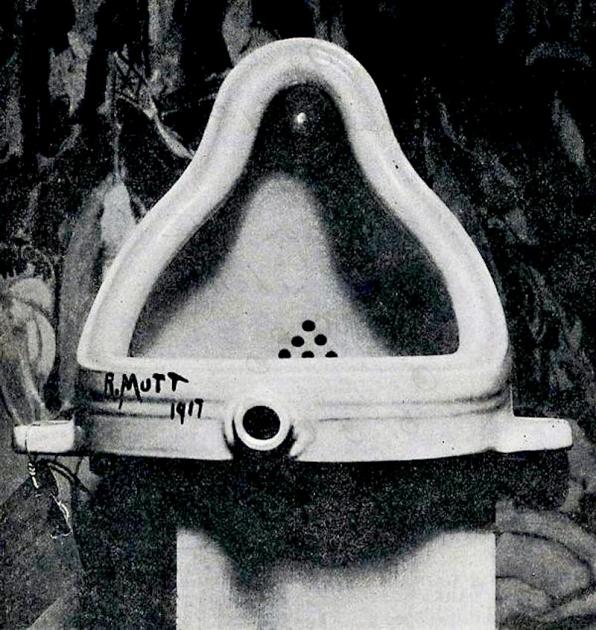Artlyst recently created a list of the most offensive works of art; so what is the difference between this and its idea of hated art? Our good friend Marcel Duchamp may hold the answer. For the critical point in tipping the urinal over, marking it ‘R. Mutt’ and placing it in a gallery – launching the ‘readymade’ as an art object, thereby shaking up the course of art history – was its use of context and physical placement. It was hated by the art establishment for entering its pristine, prestigious, precious walls.
Hooray, the whole idea of conceptual art as we know it was born. Except that now we have ridiculous art within the gallery context, it no longer offends the art establishment, who are happy enough not just for it to adorn the hallowed gallery space, but to buy into its market value: Tate Britain were insane enough to buy Martin Creed’s lights going on and off. Here, the hatred was within the gallery going public at its very presence in their so called recreational, educational, place of leisure and learning. Indeed, part of the brilliance of our freedom of speech and expression is the encouragement it gives to artistic development. It is what is secondarily done with the completed work that can be the root of its hatred: Creed is as welcome as anyone to enter his non-idea into the Turner Prize, but surely no one in their right minds would actually buy it, least of all Tate Britain, thus positing it as representational of the best of British. Why should our creative history be equated with this silly pants art?! Tracy Emin can fall out of bed and call it art, but I only really hated it once I discovered it was one of the things I’d paid money to see in Charles Saatchi’s County Hall collection of YBAs (slightly alleviated by the wonderful Richard Wilson piece ’20:50’, the Chapman bros and the totally undervalued Peter Doig. Slightly.)
A case which beautifully demonstrates the point is the enormous semen stain on the landscape that is Damien Hirst’s 33 foot high ‘Virgin Mother’ statue (not sculpture). Personally I find its very existence and aspiration to the same medium of art as Michaelangelo’s Virgin Mother, or Pieta, offensive in the extreme. Yet I don’t harbour a hatred for it: but I’d wager that I certainly would do however if I were neighbour to Aby Rosen and had to wake up every day to a. a deliberately ugly, crass and thoroughly meaningless flayed woman, and b. the hideously misinformed and money-driven art decisions of the guy over the fence. Context is everything.
If we search hard, we can find at least one positive amongst the depressing wreck that is the destruction of the 3,000-year-old Assyrian city of Nimrud by IS, and previously the destruction of ‘Degenerate Art’ by the Nazis. This is the continuing emotional, intellectual and human power that art represents; both organisations sought to destroy it through hate: an irrational response to a threat they could not comprehend. Artistic expression, rather than suppression, is vital for the development of humankind: one look at the Nazi promoted art of the 1930s is to witness a regression into a terrible mess of racist faux classicism; an affront to visual sophistication. However much Emin’s vagina personally offends me and many others, it is nonetheless imperative that she be allowed to express herself without fear of suppression or silencing. Which I never thought I’d ever say in my life.
artbytch@artlyst.com © Artlyst 2015 all rights reserved

